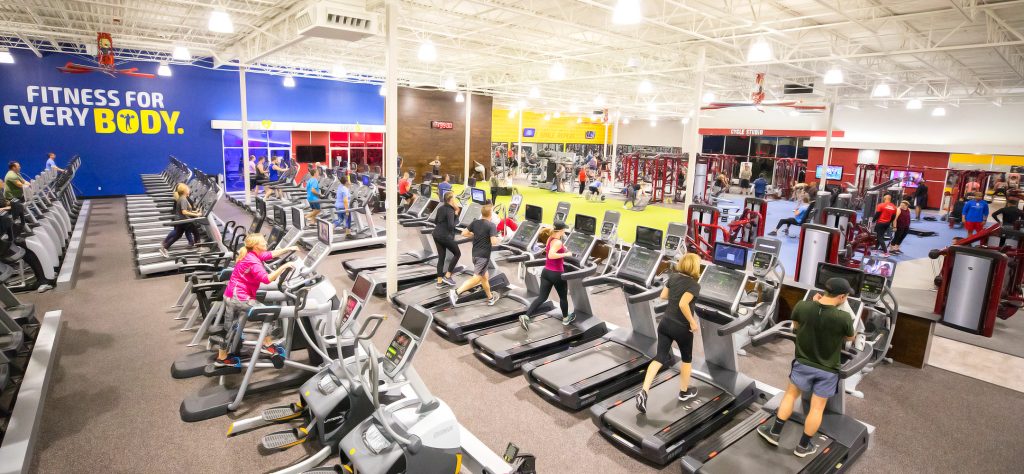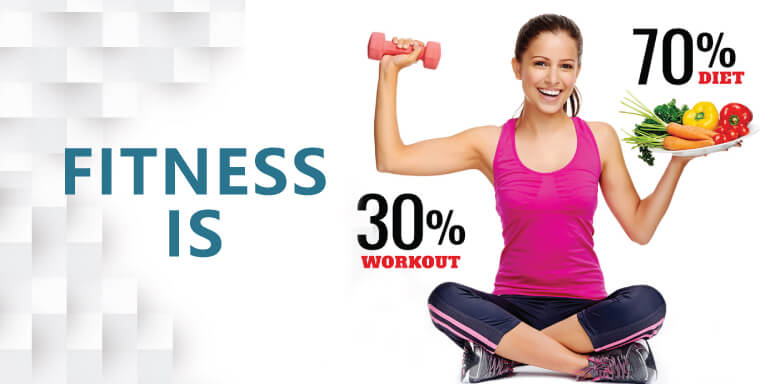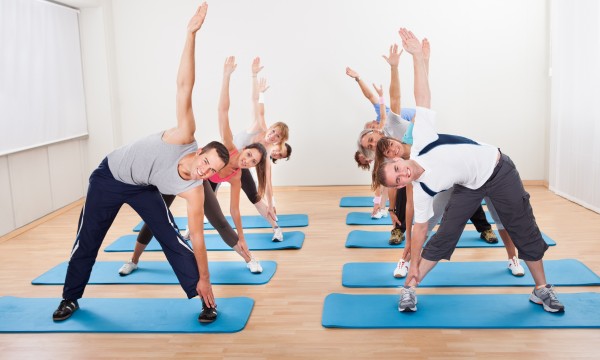One of the most important things people can do for their health is to engage in regular physical activity. A life that includes exercise is one with less likelihood of serious physical and mental ailments. The benefits are wide-ranging, from stronger bones, greater lung power, and a healthier heart to a lower cancer risk, a sharper brain, and a happier spirit. Regular exercise is one of the best things you can do for your health. It has many benefits, including improving your overall health and fitness, and reducing your risk for many chronic diseases. There are many different types of exercise; it is important that you pick the right types for you.
Unfortunately, most Americans are not active enough to reap these rewards. But a reasonably modest change in behavior can make a big difference, bringing benefits within reach. Most of us could improve our health significantly by making room in our lives for a half-hour of exercise most days of the week. And the exercise doesn’t have to be intense—it can be a simple 30-minute walk at a moderate pace. Most people benefit from a combination of them:
Endurance
Endurance activities, often referred to as aerobic, increase your breathing and heart rates. These activities help keep you healthy, improve your fitness, and help you perform the tasks you need to do every day. Endurance exercises improve the health of your heart, lungs, and circulatory system. They also can delay or prevent many diseases that are common in older adults such as diabetes, colon and breast cancers, heart disease, and others. Physical activities that build endurance include:
- Brisk walking or jogging
- Yard work (mowing, raking)
- Dancing
- Swimming
- Biking
- Climbing stairs or hills
- Playing tennis or basketball
Increase your endurance or “staying power” to help keep up with your grandchildren during a trip to the park, dance to your favorite songs at a family wedding, and rake the yard and bag up leaves. Build up to at least 150 minutes of activity a week that makes you breathe hard. Try to be active throughout your day to reach this goal and avoid sitting for long periods of time.
Safety tips
- Do a little light activity, such as easy walking, before and after your endurance activities to warm up and cool down.
- Listen to your body: endurance activities should not cause dizziness, chest pain or pressure, or a feeling like heartburn.
- Be sure to drink liquids when doing any activity that makes you sweat. If your doctor has told you to limit your fluids, be sure to check before increasing the amount of fluid you drink while exercising.
- If you are going to be outdoors, be aware of your surroundings.
- Dress in layers so you can add or remove clothes as needed for hot and cold weather.
- To prevent injuries, use safety equipment, such as a helmet when bicycling.
When you’re being active, just try talking: if you’re breathing hard but can still have a conversation easily, it’s moderate-intensity activity. If you can only say a few words before you have to take a breath, it’s vigorous-intensity activity.
Strength
Your muscular strength can make a big difference. Strong muscles help you stay independent and make everyday activities feel easier, like getting up from a chair, climbing stairs, and carrying groceries. Keeping your muscles strong can help with your balance and prevent falls and fall-related injuries. You are less likely to fall when your leg and hip muscles are strong. Some people call using weight to improve your muscle strength “strength training” or “resistance training.”
Strength exercises include lifting weights, even your own body weight, and using a resistance band.
Lifting weights
Try to do strength exercises for all of your major muscle groups at least 2 days per week, but don’t exercise the same muscle group on any 2 days in a row. If you’re just starting, you might need to use 1- or 2-pound weights, or no weight at all. Your body needs to get used to strength exercises. You can use common objects from your home, such as bottled water or soup cans. Or, you can use the strength-training equipment at a fitness center or gym. Use light weights the first week, then gradually add more. Starting out with weights that are too heavy can cause injuries. Use proper form for safety. To prevent injury, don’t jerk or thrust weights into position. Use smooth, steady movements. Avoid “locking” your arm and leg joints in a tightly straightened position.
Using a resistance band
Resistance bands are stretchy elastic bands that come in several strengths, from light to heavy. You can use them in some strength exercises instead of weights. If you are a beginner, try exercising without the band or use a light band until you are comfortable. Add a band or move on to a stronger band when you can do two sets of 10 to 15 repetitions easily. Hold on to the band tightly (some bands have handles) or wrap it around your hand or foot to keep it from slipping and causing possible injury. Do the exercises in a slow, controlled manner, and don’t let the band snap back.
Safety tips
- Don’t hold your breath during strength exercises and breathe regularly.
- Breathe out as you lift or push, and breathe in as you relax.
- Talk with your doctor if you are unsure about doing a particular exercise.
Balance
Balance exercises help prevent falls, a common problem in older adults that can have serious consequences. Many lower-body strength exercises also will improve your balance. Exercises to improve your balance include Tai Chi, a “moving meditation” that involves shifting the body slowly, gently, and precisely, while breathing deeply.
Examples of balance exercises
- Try standing on one foot, then the other. If at first you need support, hold on to something sturdy. Work your way up to doing this movement without support. Get up from a chair without using your hands or arms.
- Try the heel-to-toe walk. As you walk, put the heel of one foot just in front of the toes of your other foot. Your heel and toes should touch or almost touch.
Safety Tips
- Have a sturdy chair or a person nearby to hold on to if you feel unsteady.
- Talk with your doctor if you are unsure about a particular exercise.
Flexibility
Stretching can improve your flexibility. Moving more freely will make it easier for you to reach down to tie your shoes or look over your shoulder when you back your car out of the driveway.
Examples of flexibility exercises
- Try the calf stretch exercise. Stand facing a wall slightly farther than arm’s length from the wall, feet shoulder-width apart. Step forward with the right leg and bend the right knee. Keeping both feet flat on the floor, bend the left knee slightly until you feel a stretch in your left calf muscle. Hold the position for 10 to 30 seconds, and then return to the starting position. Repeat with the left leg.
- Try the ankle stretch exercise. Sit securely toward the edge of a sturdy, armless chair. Stretch your legs out in front of you. With your heels on the floor, bend your ankles to point the toes toward you. Hold the position for 10 to 30 seconds. Bend your ankles to point toes away from you and hold for 10 to 30 seconds.
Safety tips
- Stretch when your muscles are warmed up.
- Stretch after endurance or strength exercises.
- Don’t stretch so far that it hurts.
- Always remember to breathe normally while holding a stretch.
- Talk with your doctor if you are unsure about a particular
Exercise & Fitness
Exercising regularly, every day if possible, is the single most important thing you can do for your health. In the short term, exercise helps to control appetite, boost mood, and improve sleep. In the long term, it reduces the risk of heart disease, stroke, diabetes, dementia, depression, and many cancers. The Centers for Disease Control and Prevention recommend the following:
For adults of all ages
- At least 150 minutes of moderate aerobic exercise like brisk walking or 75 minutes of rigorous exercise like running (or an equivalent mix of both) every week. It’s fine to break up exercise into smaller sessions as long as each one lasts at least 10 minutes.
- Strength-training that works all major muscle groups—legs, hips, back, abdomen, chest, shoulders, and arms—at least two days a week. Strength training may involve lifting weights, using resistance bands, or exercises like push-ups and sit-ups, in which your body weight furnishes the resistance.
For pregnant women
The guidelines for aerobic exercise are considered safe for most pregnant women. The CDC makes no recommendation for strength training. It’s a good idea to review your exercise plan with your doctor.
For children
At least 60 minutes of physical activity a day, most of which should be devoted to aerobic exercise. Children should do vigorous exercise and strength training, such as push-ups or gymnastics, on at least three days
Exercise: 7 benefits of regular physical activity
1. Exercise controls weight
Exercise can help prevent excess weight gain or help maintain weight loss. When you engage in physical activity, you burn calories. The more intense the activity, the more calories you burn.
Regular trips to the gym are great, but don’t worry if you can’t find a large chunk of time to exercise every day. Any amount of activity is better than none at all. To reap the benefits of exercise, just get more active throughout your day — take the stairs instead of the elevator or rev up your household chores. Consistency is key.
2. Exercise combats health conditions and diseases
Worried about heart disease? Hoping to prevent high blood pressure? No matter what your current weight is, being active boosts high-density lipoprotein (HDL) cholesterol, the “good” cholesterol, and it decreases unhealthy triglycerides. This one-two punch keeps your blood flowing smoothly, which decreases your risk of cardiovascular diseases.
Regular exercise helps prevent or manage many health problems and concerns, including:
- Stroke
- Metabolic syndrome
- High blood pressure
- Type 2 diabetes
- Depression
- Anxiety
- Many types of cancer
- Arthritis
- Falls
It can also help improve cognitive function and helps lower the risk of death from all causes.
3. Exercise improves mood
Need an emotional lift? Or need to blow off some steam after a stressful day? A gym session or brisk walk can help. Physical activity stimulates various brain chemicals that may leave you feeling happier, more relaxed and less anxious.
You may also feel better about your appearance and yourself when you exercise regularly, which can boost your confidence and improve your self-esteem.
4. Exercise boosts energy
Winded by grocery shopping or household chores? Regular physical activity can improve your muscle strength and boost your endurance.
Exercise delivers oxygen and nutrients to your tissues and helps your cardiovascular system work more efficiently. And when your heart and lung health improve, you have more energy to tackle daily chores.
5. Exercise promotes better sleep
Struggling to snooze? Regular physical activity can help you fall asleep faster, get better sleep and deepen your sleep. Just don’t exercise too close to bedtime, or you may be too energized to go to sleep.
6. Exercise puts the spark back into your sex life
Do you feel too tired or too out of shape to enjoy physical intimacy? Regular physical activity can improve energy levels and increase your confidence about your physical appearance, which may boost your sex life.
But there’s even more to it than that. Regular physical activity may enhance arousal for women. And men who exercise regularly are less likely to have problems with erectile dysfunction than are men who don’t exercise.
7. Exercise can be fun … and social!
Exercise and physical activity can be enjoyable. They give you a chance to unwind, enjoy the outdoors or simply engage in activities that make you happy. Physical activity can also help you connect with family or friends in a fun social setting.
So take a dance class, hit the hiking trails or join a soccer team. Find a physical activity you enjoy, and just do it. Bored? Try something new, or do something with friends or family.
The bottom line on exercise
Exercise and physical activity are great ways to feel better, boost your health and have fun. For most healthy adults, the Department of Health and Human Services recommends:
- At least 150 minutes a week of moderate aerobic activity or 75 minutes a week of vigorous aerobic activity, or a combination of moderate and vigorous activity. The guidelines suggest that you spread this exercise throughout the week. Examples include running, walking or swimming. Even small amounts of physical activity are helpful, and accumulated activity throughout the day adds up to provide health benefits.
- Strength training exercises for all major muscle groups at least two times a week. Examples include lifting free weights, using weight machines or doing body-weight training.
Spread your activities throughout the week. If you want to lose weight, meet specific fitness goals or get even more benefits, you may need to ramp up your moderate aerobic activity to 300 minutes or more a week.
Remember to check with your doctor before starting a new exercise program, especially if you have any concerns about your fitness, haven’t exercised for a long time, have chronic health problems, such as heart disease, diabetes or arthritis.




















13 Comments
Comments are closed.